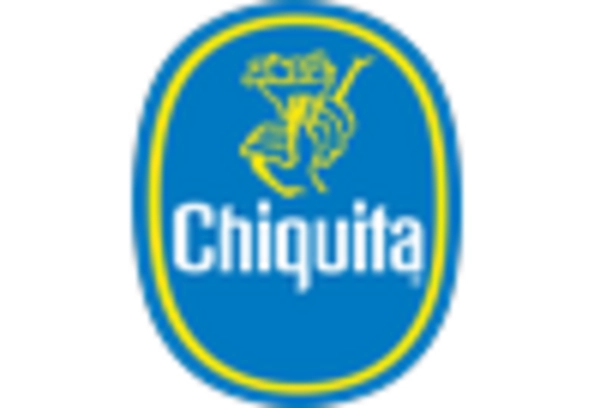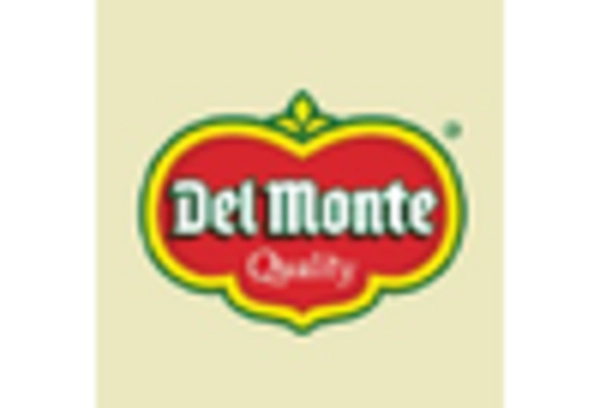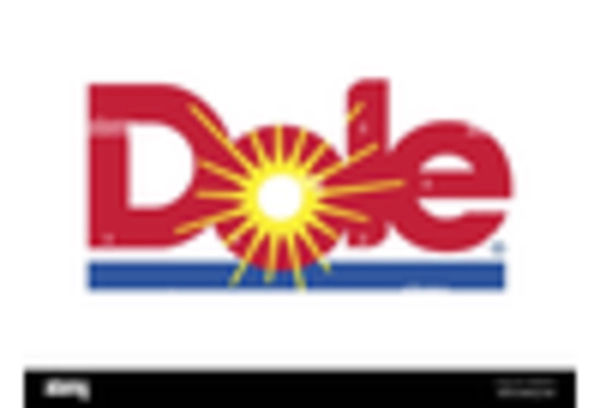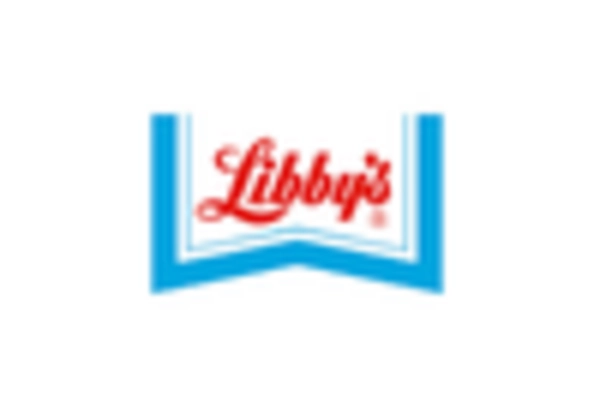Expansion of Retail Channels
The Canned Pineapple Market is benefiting from the expansion of retail channels, which enhances product accessibility. With the rise of e-commerce and the proliferation of supermarkets and convenience stores, consumers have more options than ever to purchase canned pineapple. Recent data indicates that online grocery sales have surged by 20% in the past year, indicating a shift in shopping habits. This expansion allows manufacturers to reach a wider audience and cater to diverse consumer preferences. As retailers increasingly stock a variety of canned fruit products, the Canned Pineapple Market is likely to see a boost in sales, driven by improved availability and consumer convenience.
Increased Focus on Healthy Eating
The Canned Pineapple Market is witnessing a surge in consumer interest towards healthy eating habits. As awareness of nutrition and wellness grows, individuals are increasingly incorporating fruits into their diets. Canned pineapple, rich in vitamins and minerals, serves as a convenient option for health-conscious consumers. Recent statistics indicate that the fruit and vegetable canned goods market has expanded by 3.2% over the past year, reflecting a broader trend towards healthier food choices. This shift is further supported by the rise of dietary preferences such as veganism and vegetarianism, which often emphasize fruit consumption. Consequently, the Canned Pineapple Market is well-positioned to capitalize on this growing demand for nutritious and convenient food options.
Innovations in Packaging Technology
The Canned Pineapple Market is benefiting from advancements in packaging technology that enhance product appeal and shelf life. Innovative packaging solutions, such as BPA-free cans and resealable containers, are becoming increasingly popular among consumers. These developments not only improve the safety and convenience of canned pineapple but also align with consumer preferences for sustainable and eco-friendly products. Recent market analysis suggests that the packaging sector is projected to grow by 5% annually, which could positively impact the canned fruit market. As manufacturers adopt these new technologies, the Canned Pineapple Market is likely to see an increase in sales, driven by enhanced product quality and consumer satisfaction.
Rising Demand for Convenience Foods
The Canned Pineapple Market is experiencing a notable increase in demand for convenience foods. As lifestyles become busier, consumers are seeking quick and easy meal solutions. Canned pineapple, with its ready-to-eat nature, fits perfectly into this trend. According to recent data, the convenience food sector has seen a growth rate of approximately 4.5% annually, which positively influences the canned pineapple segment. This shift towards convenience is particularly evident among urban populations, where time constraints drive purchasing decisions. Retailers are responding by expanding their canned fruit offerings, thereby enhancing visibility and accessibility. The Canned Pineapple Market stands to benefit significantly from this trend, as more consumers opt for products that save time without compromising on nutrition.
Growing Popularity of Tropical Flavors
The Canned Pineapple Market is experiencing a rise in the popularity of tropical flavors, which is influencing consumer preferences. As culinary trends evolve, there is a growing inclination towards exotic and tropical fruits, with pineapple being a prominent choice. This trend is reflected in the food and beverage sector, where tropical flavors have seen a 6% increase in demand over the past year. Canned pineapple, often used in various dishes and beverages, is well-positioned to capitalize on this trend. The Canned Pineapple Market can leverage this growing interest by promoting the versatility of canned pineapple in both sweet and savory applications, thereby attracting a broader consumer base.


















Leave a Comment